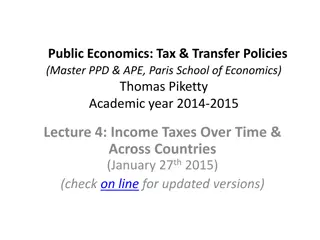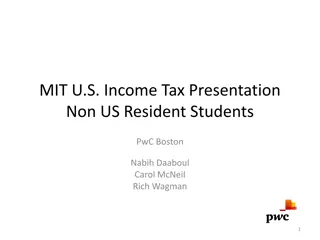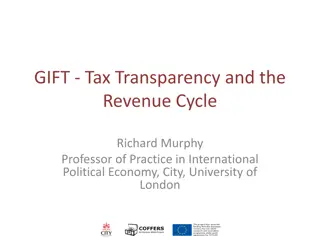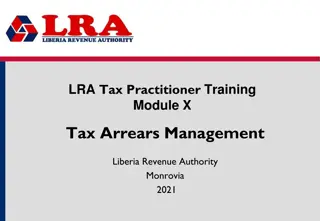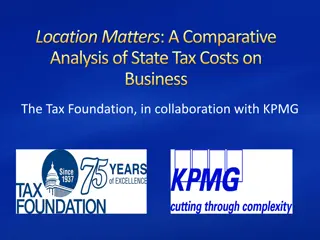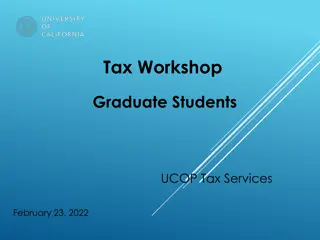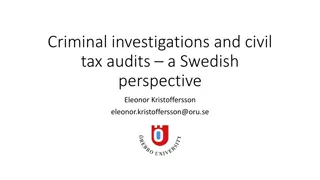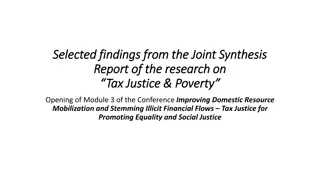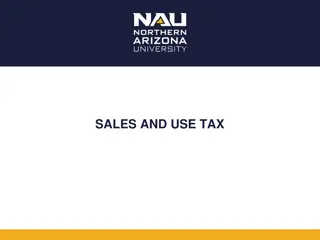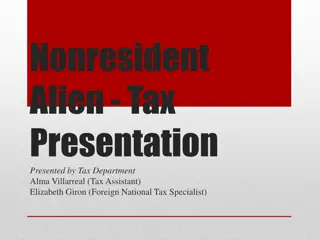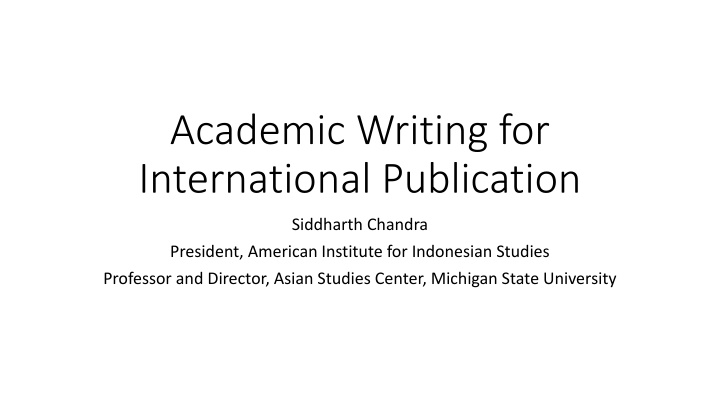
Risk Management in Tax Administrations: Understanding Notions, Concepts, and Parameters
The multi-faceted nature of risks in tax administrations, from potentiality of occurrence to reasons for uncertainty. Delve into various risk scenarios and how decision-making can mitigate them effectively.
Download Presentation

Please find below an Image/Link to download the presentation.
The content on the website is provided AS IS for your information and personal use only. It may not be sold, licensed, or shared on other websites without obtaining consent from the author. If you encounter any issues during the download, it is possible that the publisher has removed the file from their server.
You are allowed to download the files provided on this website for personal or commercial use, subject to the condition that they are used lawfully. All files are the property of their respective owners.
The content on the website is provided AS IS for your information and personal use only. It may not be sold, licensed, or shared on other websites without obtaining consent from the author.
E N D
Presentation Transcript
Academic Writing for International Publication Siddharth Chandra President, American Institute for Indonesian Studies Professor and Director, Asian Studies Center, Michigan State University
Background American Institute for Indonesian Studies (AIFIS) https://www.aifis.org/ Consortium of 30 US universities Professors with links to Indonesia Research about Indonesia
Fellowship opportunities Fellowships for US researchers to come to Indonesia Fellowships for Indonesian researchers to travel to the USA https://www.aifis.org/fellowships/ https://www.aifis.org/take-action/
Implementing AIFISs Mission Working with researchers in Indonesia to build Research capacity Research collaborations Capacity to publish in international journals
AIFIS workshop series Three days long Intensive collaboration with mentors Mentors include Journal editor Professors with experience in academic English, critical thinking and conceptualization, and publication in top journals Individual review of a research manuscript Continued consultation Past workshops Results so far
Workshop topics What do journal editors look for in research papers when they are considering publication? How to convey your ideas effectively when writing an academic research paper. Academic English. What do reviewers look for in research papers that they are asked to review? Tips for successful publication in international academic journals.
Todays presentation What do journal editors look for in research papers when they are considering publication? What do reviewers look for in research papers that they are asked to review? Tips for successful publication in international academic journals. Time for questions and answers.
What editors want Readers
The first question an editor asks Who is going to read this paper? To get published, authors need to Write for a specific audience Pick journals or publishers that serve that audience If possible, interest a wider audience
Selecting a journal Check journal web pages Some journals broadly focused, some narrow Some journals want theory, some want data Some have a geographical focus Ask your research community Is the journal efficient? Is the journal prestigious? Do they provide thoughtful reviews? Make sure that your paper matches the culture of the journal Example: qualitative vs. quantitative
Significance Is the topic important? Sub-text: will many people want to read it? Does the paper advance the state of knowledge? Sub-text: will people get something out of it?
Innovation What is new? Substantively/topically Methodologically Both
Approach Does the paper use robust methods to answer the central question(s)? Are the data appropriate for answering the central question(s)?
Make it easy Reviewers are (very) busy people Time budget for reviews Make the presentation of your paper excellent Error and typo free Good is not good enough Automatic copy-editing Distracts the reviewer from your research Wastes the reviewer s time
Make it interesting Convince the reviewer that the paper is interesting and innovative Importance of the abstract and introduction Usually the first thing a reviewer will read The first impression is the last impression Importance of the conclusion Tells the reviewer what (s)he (hopefully) got from the paper References SWYK or STYK: show that (or what) you know A quick way to show the reviewer that (or what) you know If the journal does not limit the number of references, more is better
Structures for writing In some disciplines, there are established structures for writing Structured abstracts Quantitative social sciences Introduction, literature review Data and methods Results, discussion Conclusion References Epidemiology Jim Anthony s thirty nine questions
The importance of a research community Attend international conferences Get to know colleagues in the field What are the good journals in the field? Reputation Efficiency Run your paper by your colleagues Especially international colleagues
Questions and answers Now it is your turn


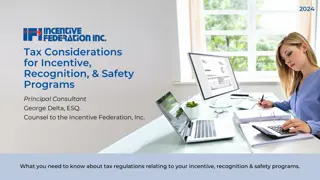
![Town of [Town Name] Real Estate Tax Rates and FY 2024 Budget Summary](/thumb/62211/town-of-town-name-real-estate-tax-rates-and-fy-2024-budget-summary.jpg)





